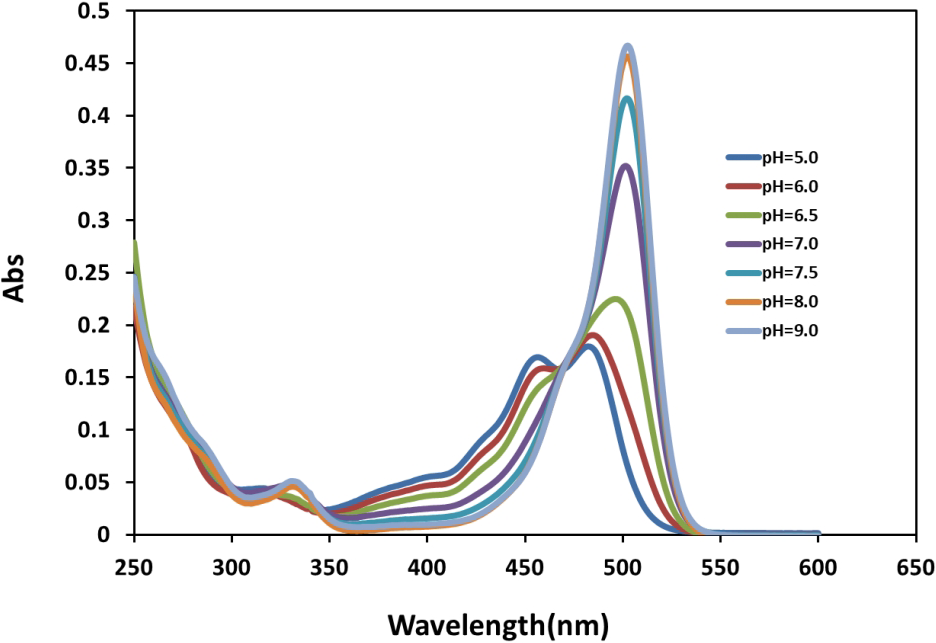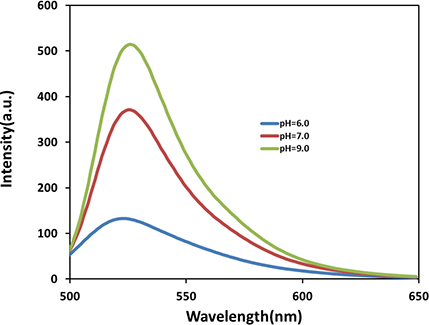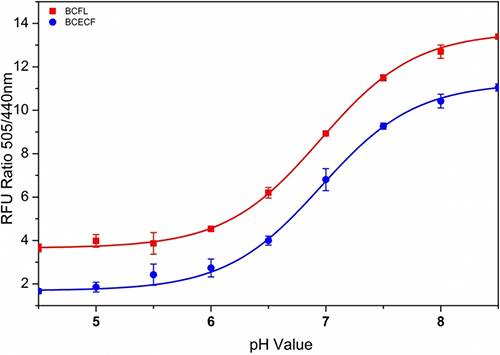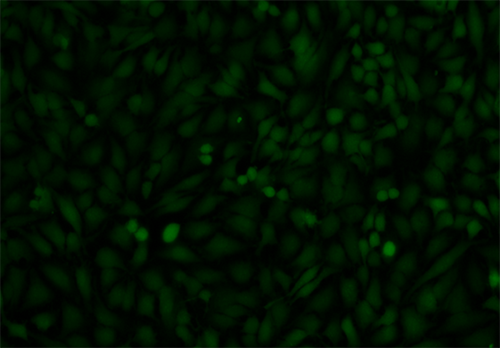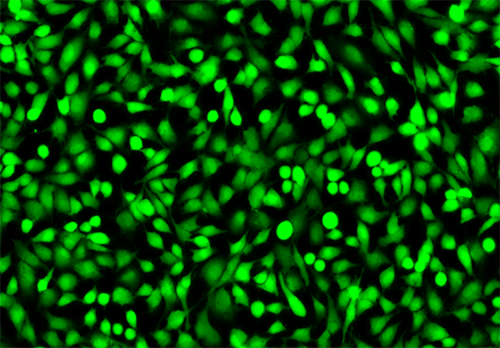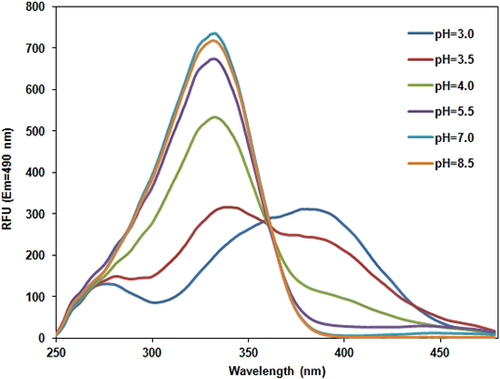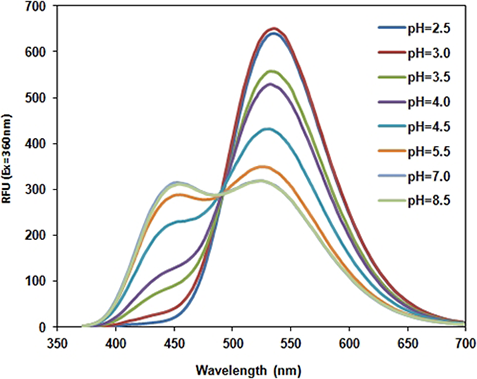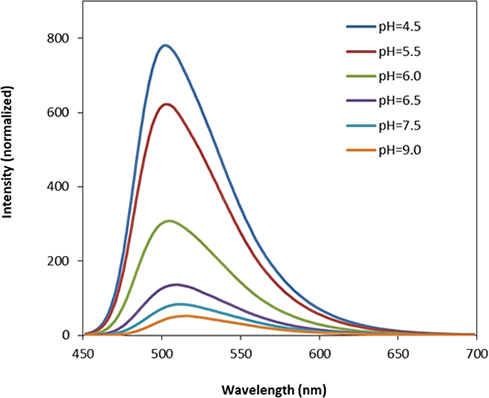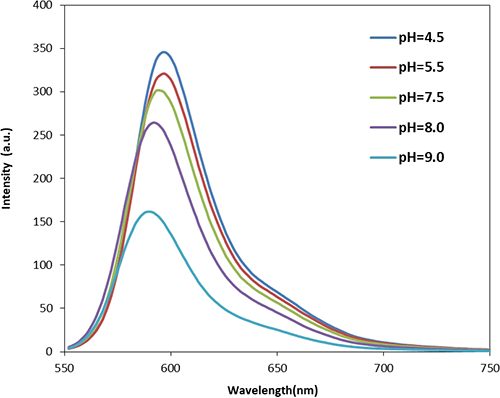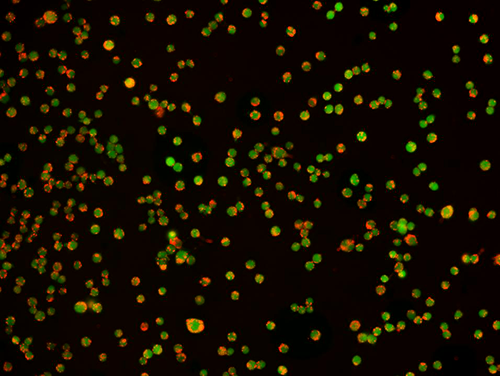Intracellular pH plays an important modulating role in various cellular events, including cell growth, calcium regulation, enzymatic activity, receptor-mediated signal transduction, ion transport, endocytosis, chemotaxis, cell adhesion, and much more. With the help of pH-sensitive fluorescent indicators researchers are able to monitor intracellular pH fluctuations within live cells with greater sensitivity, spatial resolution and sampling density.
In general, a cell’s intracellular pH will differ amongst its various cellular compartments. For instance, the pH of the cytosol ranges between ∼6.8 to 7.4, while acidic organelles, such as lysosomes, have a pH ranging from ∼4.5 to 6.0. Therefore, when selecting a pH indicator it is important to match its pKa to the pH of the experimental system. We offer a variety of fluorescent pH indicators, pH indicator dextran-conjugates and other reagents for pH measurements in biological systems.
Near Neutral pH Measurement
BCECF, and its membrane-permeant AM ester, is the most widely used fluorescent pH indicator for measuring intracellular pH. It has a pKa of ∼6.98 which is ideal for measuring changes in cytosolic pH across various cell types, as well as, monitoring pH changes in near-neutral environments. BCECF has an absorption maximum at ∼504 nm, an isosbestic point at ∼440 nm and an emission maximum at ∼527 nm. Although BCECF exhibits dual-excitation ratiometric properties, several characteristics make ratiometric imaging less than optimal. The large distance separating its isosbestic point from its excitation maximum, its poor intracellular retention properties and its weak absorption at ∼440 nm all contribute to its poor signal-to-noise ratios. Moreover, BCECF is supplied as a complex mixture of isomers. This isomeric variability can lead to inconsistent measurements.
RatioWorks™ BCFL, A High Performance Alternative to BCECF
RatioWorks™ BCFL is a novel ratiometric indicator designed by AAT Bioquest to overcome the poor performance and isomeric variability concerning BCECF. Similar to BCECF, RatioWorks™ BCFL has a pKa ∼7, an absorption maximum at ∼ 503 nm and emission maximum at ∼528 nm. However, RatioWorks™ BCFL has an isosbestic point at ∼ 454 nm. This red-shift in its isosbestic is ideal for ratiometric imaging as it enables RatioWorks™ BCFL to generate significantly higher signal-to-noise ratios than BCECF. RatioWorks™ BCFL ratiometric imaging makes intracellular pH determination essentially independent of several variable factors, including dye concentration, path length, cellular leakage and photobleaching rate. RatioWorks™ BCFL is available as a membrane-impermeant acid, and as amine-reactive succinimidyl ester for labeling antibodies and proteins.
